There has some coverage of new work from Maria Gloria Dominguez-Bello et al. about microbes in homes (across the world). See for example
- CBS News: What bacteria may reveal about your home
- This is basically a reprinting of an Associated Press article by Lauran Neergaard: Urbanization leads to change in type of bacteria in the home
- Also see this press release from AAAS
- And this one from NYU
These all are connected to a new paper in Science Advances: Walls talk: Microbial biogeography of homes spanning urbanization. Fortunately the paper is freely available online.
I love the title. Although I think it would be more accurate to say that Maria Gloria Dominguez-Bello and colleagues are wall whisperers since one really needs some help to hear what the walls are saying.
Abstract of the paper:
Westernization has propelled changes in urbanization and architecture, altering our exposure to the outdoor environment from that experienced during most of human evolution. These changes might affect the developmental exposure of infants to bacteria, immune development, and human microbiome diversity. Contemporary urban humans spend most of their time indoors, and little is known about the microbes associated with different designs of the built environment and their interaction with the human immune system. This study addresses the associations between architectural design and the microbial biogeography of households across a gradient of urbanization in South America. Urbanization was associated with households’ increased isolation from outdoor environments, with additional indoor space isolation by walls. Microbes from house walls and floors segregate by location, and urban indoor walls contain human bacterial markers of space use. Urbanized spaces uniquely increase the content of human-associated microbes–which could increase transmission of potential pathogens–and decrease exposure to the environmental microbes with which humans have coevolved.
Some nice figures which I am posting here. The paper is definitely worth checking out.
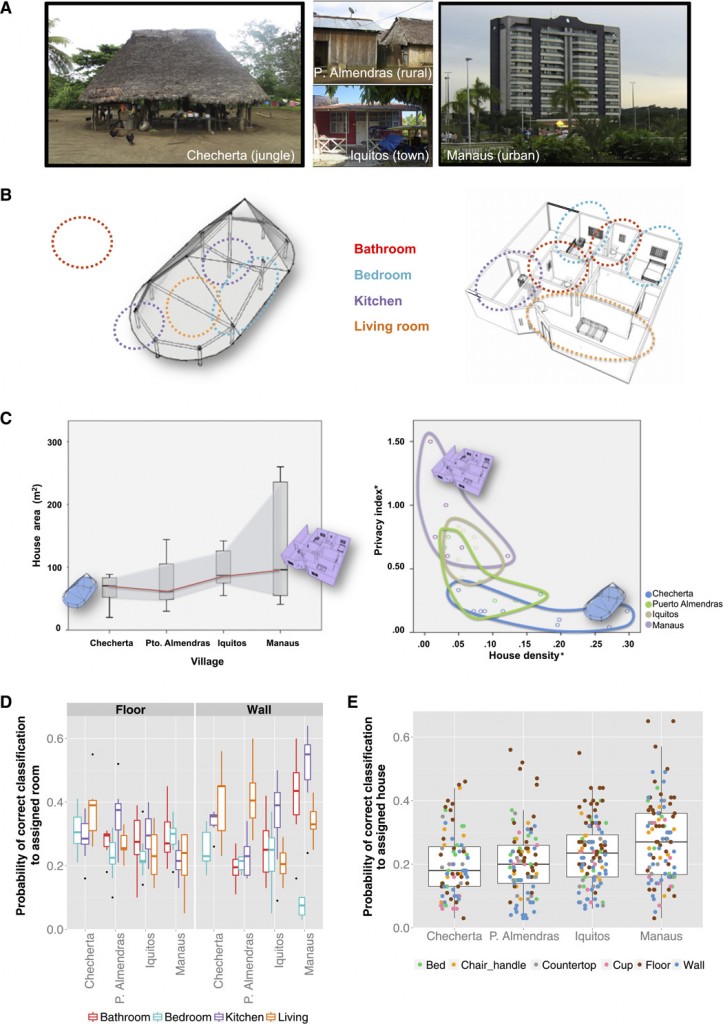
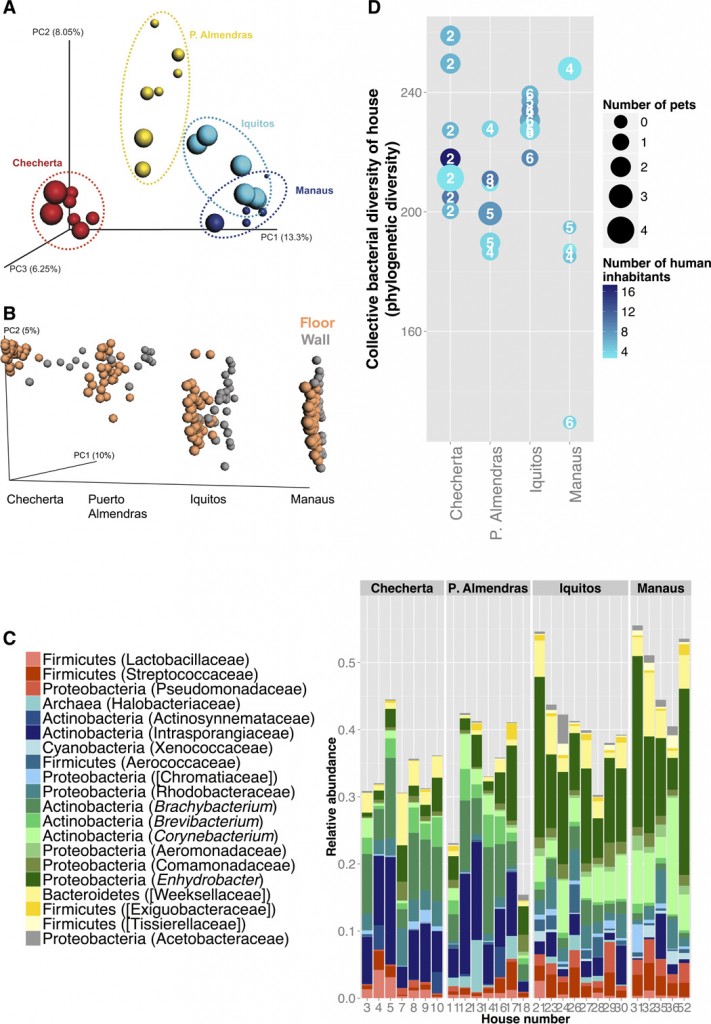
Microbial community structure in houses differs significantly across the urbanization gradient.
Seven sites that were common to all houses (living room, bedroom, kitchen floors, beds, chair handles, countertops, and living room walls) were collapsed into one sample to obtain a total measure of diversity for each home. (A) Principal coordinates analysis (PCoA) of the seven collapsed samples for each home shows tight clustering of the samples by community (P < 0.01, analysis of similarities). Point size shows the α diversity level, measured as phylogenetic diversity (PD) (smallest, <150; largest, >250). (B) PCoA plot of unweighted UniFrac distances of wall and floor bacterial communities by village. Floor samples are clustered very tightly in the jungle community, but not wall samples. This indicates that floor microbial communities resemble more to each other than wall samples. This clustering of floor samples decreases with urbanization, and microbial communities of walls and floors merge in urban locations, meaning that urban locations have similar microbes on the walls and floors, whereas in rural locations, floors have very different microbial communities. (C) Top 20 feature taxa of high relative abundance (>0.1%) that allowed for correct prediction of a sample’s source community; these include taxa commonly associated with humans (for example, Streptococcaceae, Lactobacillaceae, and Pseudomonadaceae) (shown in red hues) and taxa commonly associated with the environment (for example, Intrasporangiaceae and Rhodobacteraceae) (shown in blue hues). Taxa shown in the literature to be associated with both the environment and the human body are shown in green hues. (D) Distribution of the collective α diversity (PD) of each home, colored by the number of human inhabitants residing in the home. Numbers inside the points indicate the number of different material types that are represented by the seven samples, and the size corresponds to the total number of pets in the home (dog, cat, monkey, chicken, turtle, or parrot).
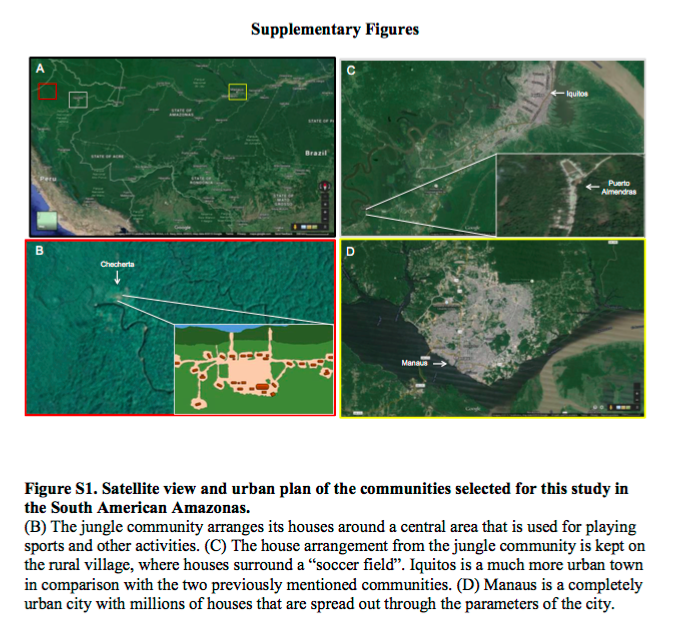
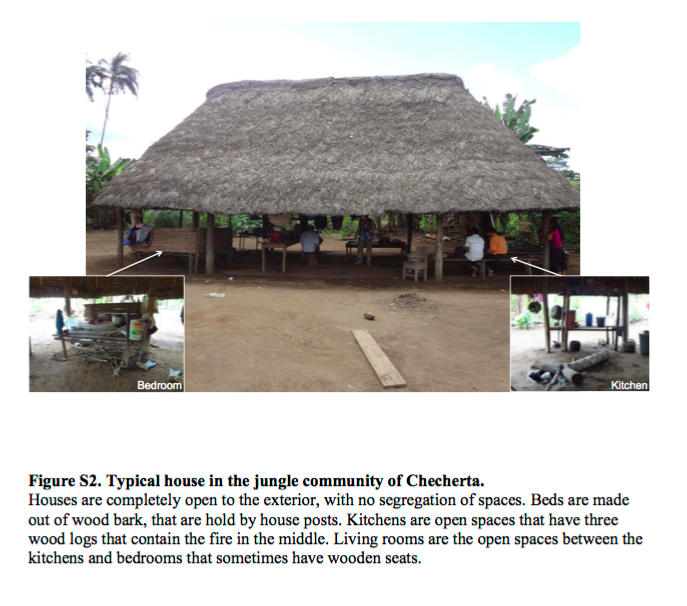

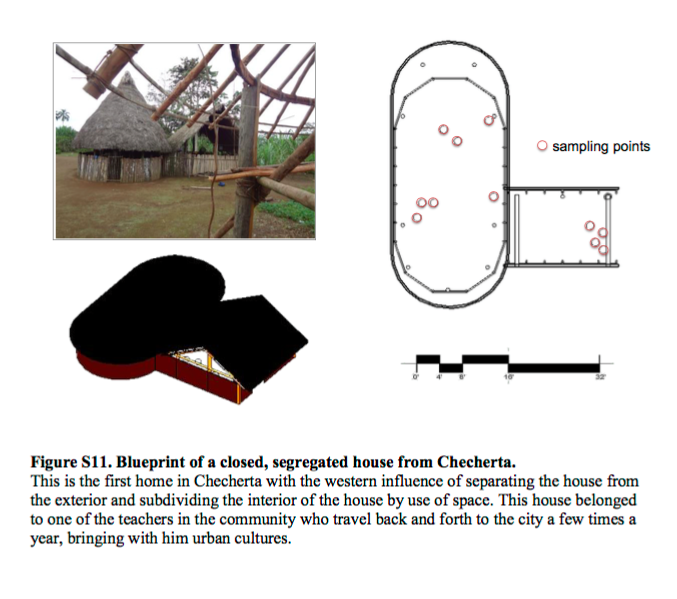
Knowledge on building physics is crucial in order to give a holistic picture of reality. Walls have to sides. Buildings are not only the surfaces that occupants can see. The hidden side of building structures are often the source of microbes affecting occupants. The building microbiome and the human microbiome meet on indoor surfaces and air, but they develop and evolve in different niches. We have to focus more on building surgery if we want to better understand building health